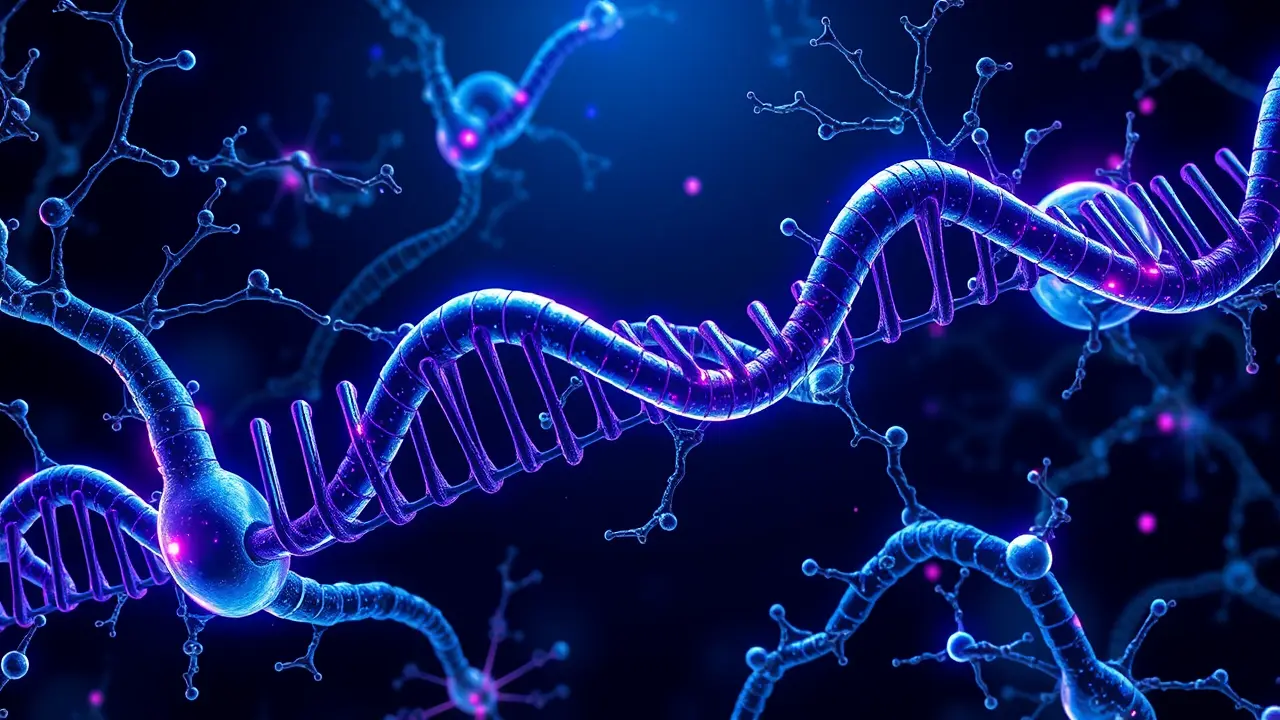
Scienceneuroscience
Scientists just found a hidden genetic flaw that slowly steals strength
KE
Kevin White
4 hours ago7 min read1 comments
In a discovery that feels ripped from the pages of a near-future medical thriller, a team of scientists has pinpointed a previously hidden genetic flaw, a molecular saboteur that systematically robs the body of its strength. This newly identified condition, dubbed MINA syndrome, operates with a chilling, insidious logic, tracing its origins not to a structural defect in a nerve cell, but to a catastrophic energy failure.The culprit is a mutation in the gene responsible for producing the NAMPT protein, a crucial enzyme in the intricate metabolic pathway that generates cellular fuel, known as NAD+. Think of NAD+ as the electrical current powering a city; without it, the lights go out.In the context of MINA syndrome, the city is our motor neurons—the long, delicate wiring that carries commands from our brain and spinal cord to our muscles, telling them to contract, to move, to live. When the NAMPT protein is faulty, these neurons are plunged into an energy blackout.They are starved of the power required to maintain their vast cellular structures and, most critically, to fire the signals that result in movement. This isn't a sudden failure, but a slow, progressive drain, a gradual dimming of the vital force that manifests as severe movement problems, muscle weakness, and a relentless decline in physical capability.The implications of this discovery are profound, reverberating far beyond the diagnosis of a single rare disorder. It fundamentally deepens our understanding of nerve cell metabolism, shifting the paradigm from viewing neurodegenerative diseases purely as problems of toxic protein clumps or inflammation to recognizing that a simple, critical power deficit can be a primary driver of neurological collapse.It's the difference between a factory breaking down because its machines are jammed with garbage versus it breaking down because someone cut the power at the main breaker. This research, likely conducted through a combination of whole-genome sequencing of affected families and sophisticated cellular models, opens a direct and promising path toward potential therapies.Unlike conditions where the underlying cause is diffuse or unknown, MINA syndrome presents a clear target: the NAD+ pathway. This is a pathway that scientists already know how to manipulate.Precursor molecules, such as nicotinamide riboside (NR), are already being investigated in other contexts for their ability to boost NAD+ levels. For patients with MINA syndrome, administering such precursors could, in theory, bypass the broken NAMPT enzyme, effectively running a new power line directly to the starving neurons and restoring their function.It represents a stunningly elegant example of precision medicine, where understanding the exact metabolic breakdown allows for a bespoke biochemical fix. This discovery sits at the thrilling confluence of AI-driven genomics and next-generation biotech, a field where we are no longer just cataloging genetic errors but learning how to re-engineer the very operating system of the cell. It underscores a future where a diagnosis of a progressive neurological disorder is not a final sentence, but the starting point for a logical, targeted intervention to restore the energy that slowly steals our strength.
#featured
#MINA syndrome
#genetic mutation
#NAMPT protein
#motor neurons
#energy metabolism
#movement disorders
#potential therapies
Stay Informed. Act Smarter.
Get weekly highlights, major headlines, and expert insights — then put your knowledge to work in our live prediction markets.
Related News
© 2025 Outpoll Service LTD. All rights reserved.
